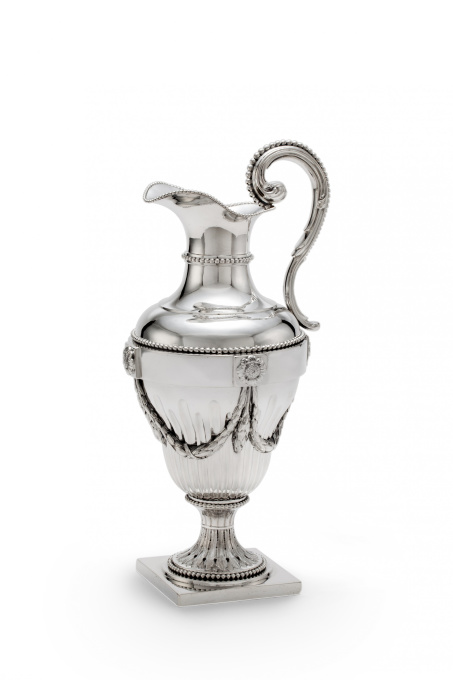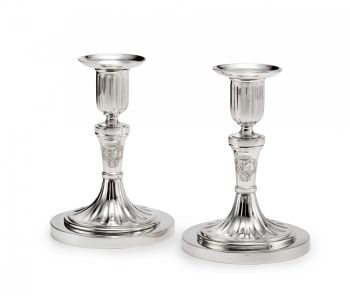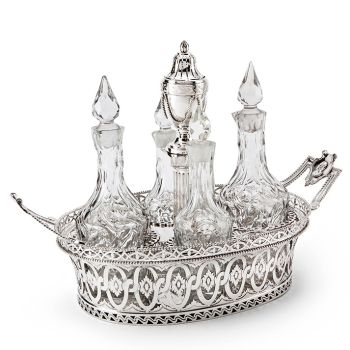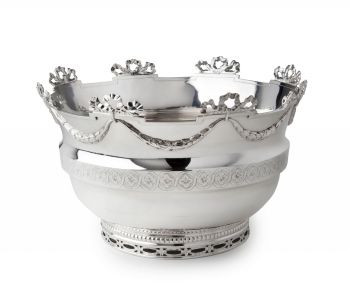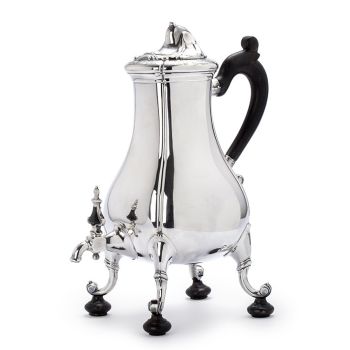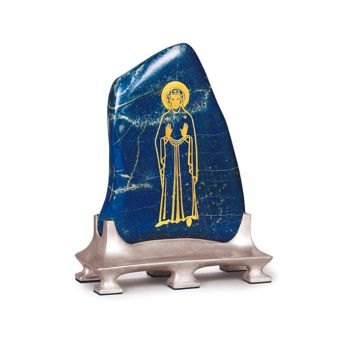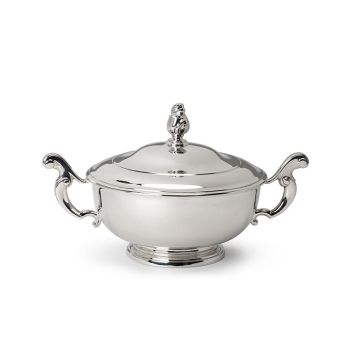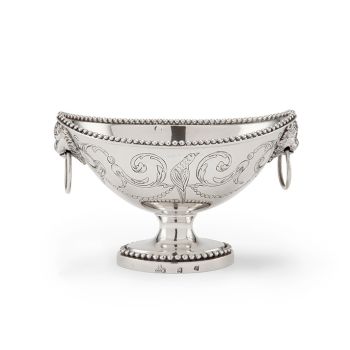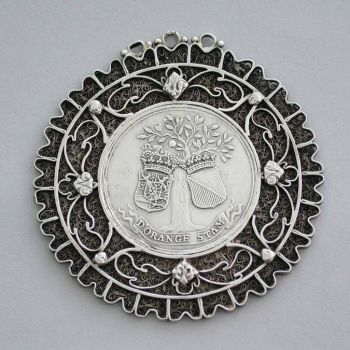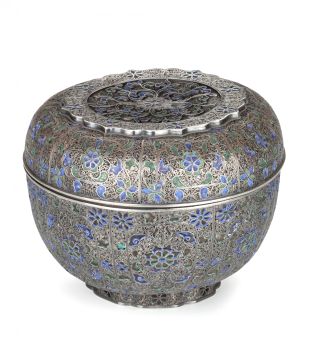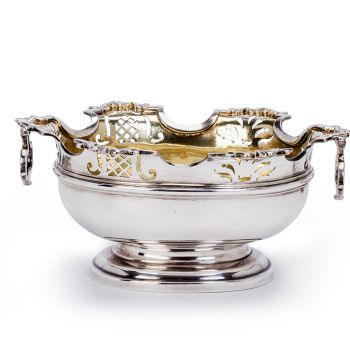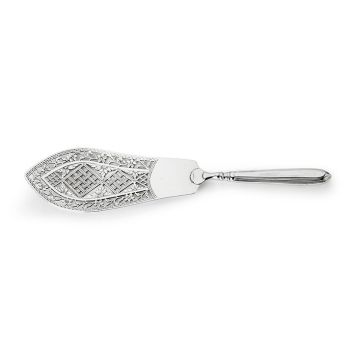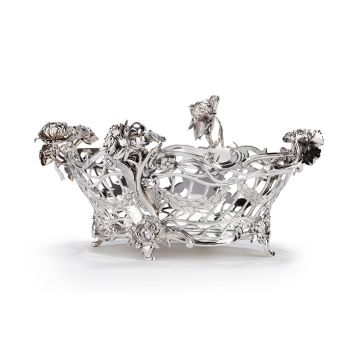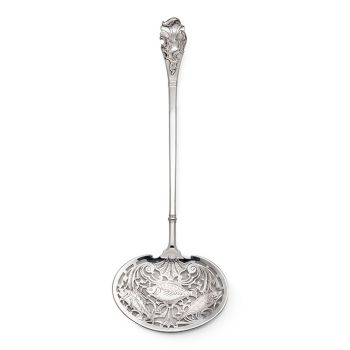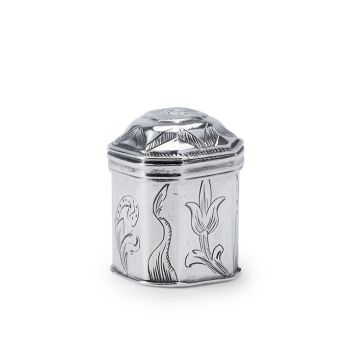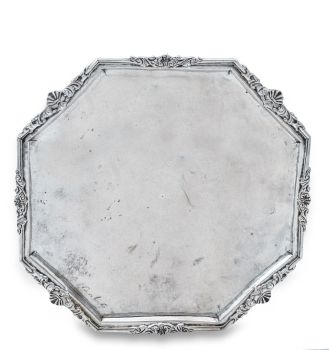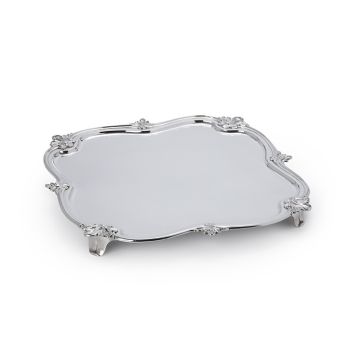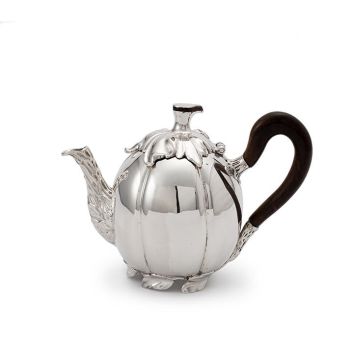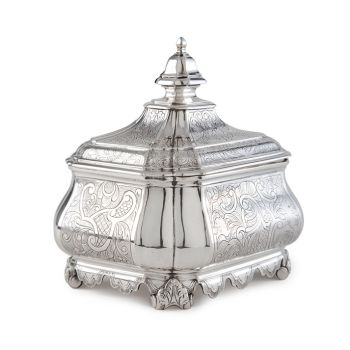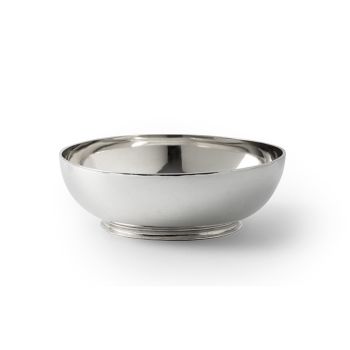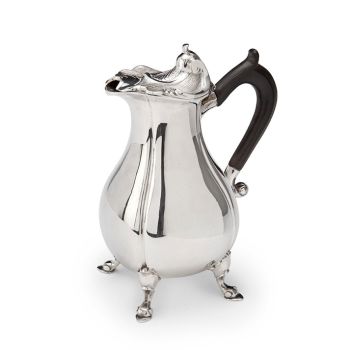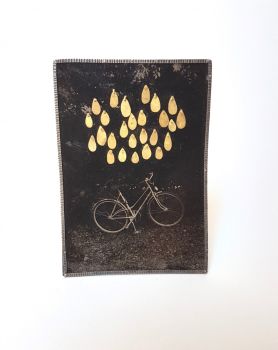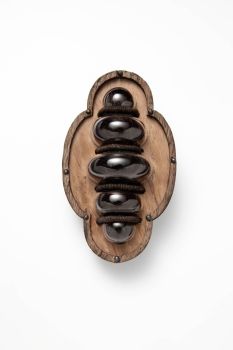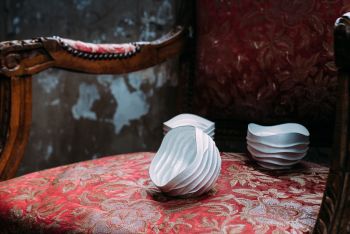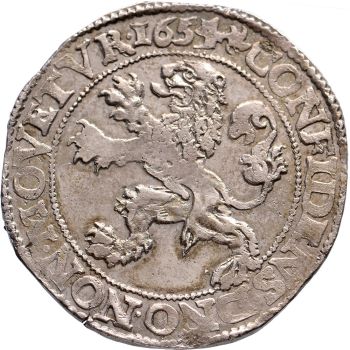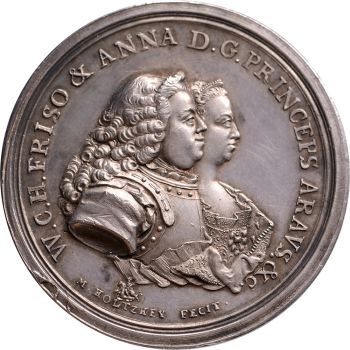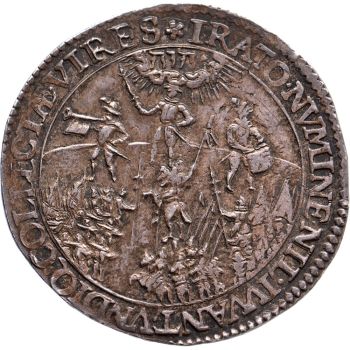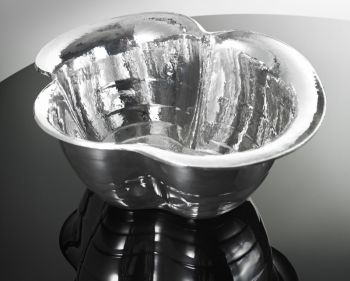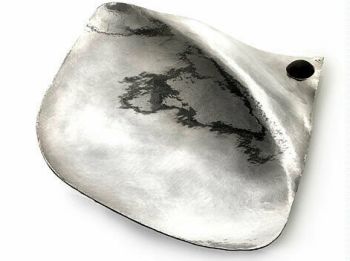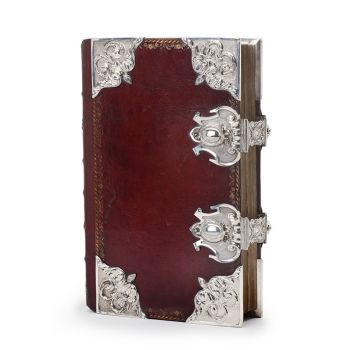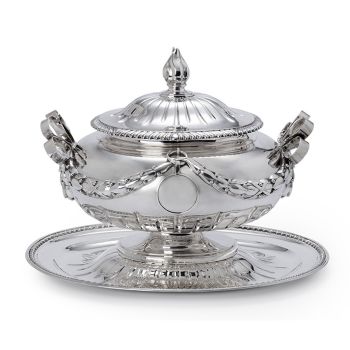Um jarro de prata holandês 1787
Martinus Logerath
Prata
31 cm
Preço em pedido
Jacob J. Roosjen SRI
- Sobre arteDutch silver jug
Martinus Logerath, Amsterdam, 1787
1164 grams, 31 cm high
This large, elegant jug with beaded borders has a partially fluted body, applied with laurel swags, headed by flower heads. The spreading circular foot with acanthus leaves is placed on a square base. The scroll handle is applied with a sequence of beads in seizes.
Martinus Logerath, who worked as a silversmith from 1767-1814, specialized in large silverware. He was born in The Hague in 1733 as son of silversmith Johannes Logerath and Johanna Wilhelmina Buys. His brother Johannes Hermanus, also a silversmith, remained active in The Hague, whereas Martinus established his workshop in Amsterdam. From 1786 he had a workshop at Egelantiersgracht. It is known that he also worked for Willem Diemont, a retailer in Amsterdam. In 1814 he seized his activities.
From his marriage with Sophia Harthoorn, with whom he lived in Laurierstraat in 1767, the year he registered as a master silversmith, his two sons are known. Eduard Martinus, also a silversmith, and Johannes Hermanus, a retailer. Unfortunately, Martinus survived his son, leaving him heirless.
In the year 1787 Martinus Logerath manufactured a beautiful oval silver tureen, which is also part of the collection Jacob J. Roosjen. Furthermore, this collection comprises a sugar bowl by this same master, made in 1793.
Associate literature:
K.A. Citroen, Amsterdamse zilversmeden en hun merken, Amsterdam, 1975, nr. 1104.
H. Vreeken, Goud en Zilver met Amsterdamse keuren, Amsterdams Historisch Museum, Zwolle, 2003, p. 452. - Sobre artistaMartinus Logerath nasceu em Haia em 1733. Ele é filho do ourives Johannes Logerath e Johanna Wilhelmina Buys, foi treinado como ourives. Ao contrário de seu irmão Johannes Hermanus, ele optou por não ficar em Haia, mas optou por Amsterdã, onde se tornou membro da guilda em 1767. Com sua esposa Sophia Harthoorn, ele morou em Lauriergracht. Em 1786, ele tinha sua oficina em Egelantiersgracht e também era fornecedor da Diemont, um varejista de objetos de prata em Amsterdã. A influência de mestres franceses como François Thomas Germain é óbvia nesta terrina. Até 1790, os ourives de Amsterdã eram inspirados nos designs franceses. É sabido que Diemont, no entanto, importou prata inglesa e, como consequência, os mestres de Amsterdã também se inspiraram nos designs ingleses.
Você está interessado em comprar esta obra de arte?
Artwork details
Related artworks
- 1 - 4 / 6
Elisabeth Treskow
Lápis-lazúli afegão incrustado com ouro em um suporte de prata1950 - 1960
Preço em pedidoJacob J. Roosjen SRI
1 - 4 / 24- 1 - 4 / 24
Tilmanus Nicolaus Maastricht
Missale Romanum com montagens de prata holandesa1788 - 1792
Preço em pedidoJacob J. Roosjen SRI
1 - 4 / 12

